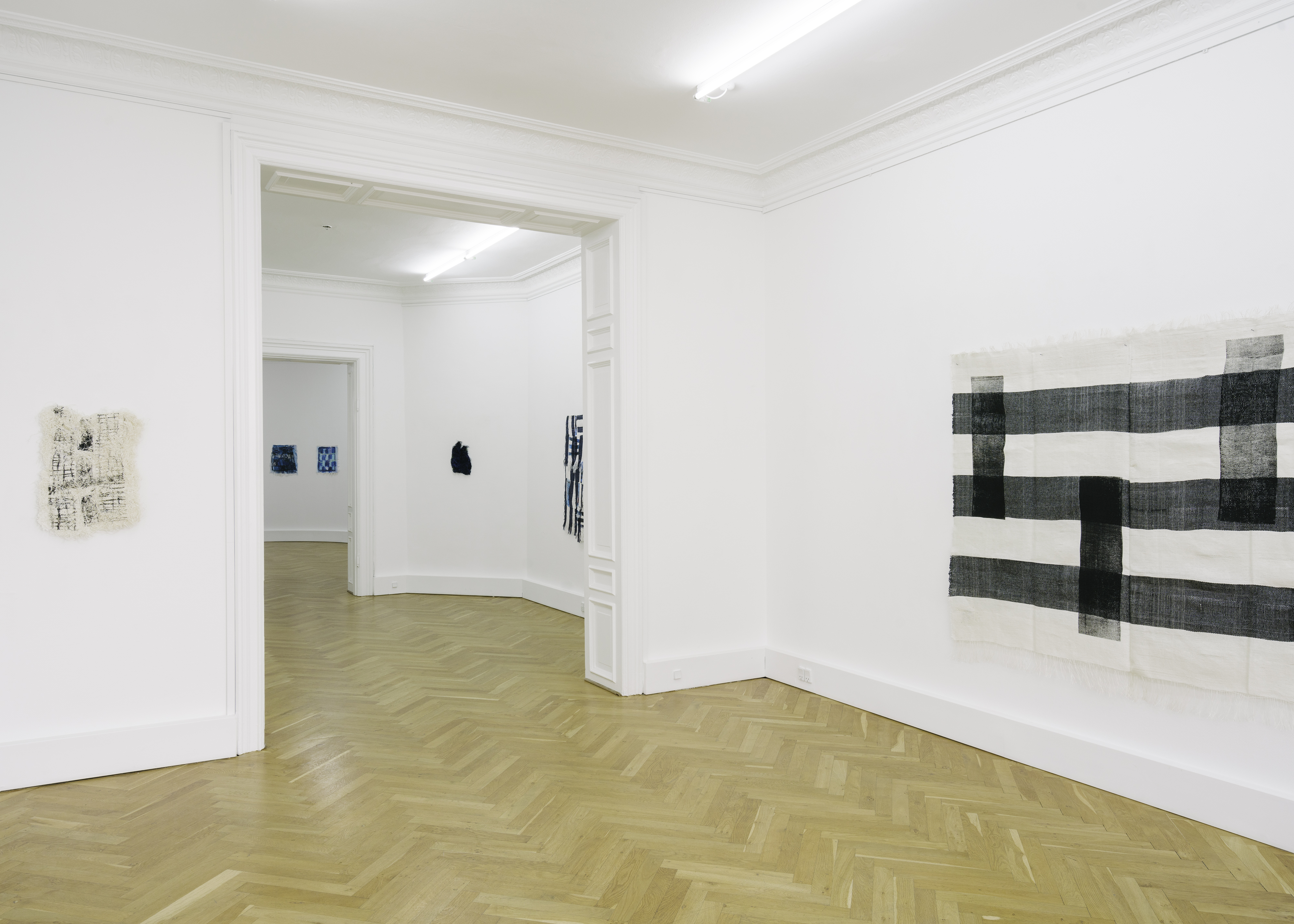Marie Hazard Solo Show Copenhagen 2020
Opening Friday October 16Th. 2020 – From 4-7 PM
EXHIBITION | TEXT | SINGLE | EXTRA
« ON HOLD » Marie Hazard – Sunday-s Copenhagen October 16th, 2020
NOIR SUR
NOIR SUR
BLANC
BLANC SUR
BLANC SUR
NOIR
BLACK ON BLACK ON WHITE WHITE ON WHITE ON BLACK
Un peu de nuit Les cils d’un pinceau Nuit lacrymale D’un noir pur
Un peu de nuit S’écoule sur un rectangle ivoire S’écoule
Et se déploie
Nuit végétale Fluide et volubile
Un peu de nuit Trace des signes
Sur le grain du silence Comme une rosée noire Sur le sable du désert
Et le silence vibre Il se fait mélancolie
Et le désert ondoie
Il se fait houle
Et chatoiement frémissant de lumière Miroir du ciel frisson d’immensité
Un peu de nuit Brille sur une feuille
Dans les lettres – sinueuses étoiles – Couvre un feu noir
Limpide
Couleur de l’invisible, Sylvain Germain
It all started here, in my studio on the sixth floor, during the lockdown in Paris.
I was alone, at a time where other people were likely to be as well. My days followed the same rhythm: I spent my time weaving with paper, polyester and linen threads. Monochrome weavings appeared on my loom: black, white, grey and blue, which I would then cut up and stitch back together. I didn’t have a lot of yarn and the shops were closed, but luckily I had kept the offcuts from my old weavings and could reuse them to create new ones. The scraps went through the washing machine and came out to make a new weft in contact with the water. The washing machine became my second weaving loom.
When I would go downstairs to my flat (in the same building as my studio), I would draw my preparatory sketches, stretch the threads from the polyester spools which I heated with an iron and then mixed them together, cutting and sewing them. My Singer was always on.
Never before had I pushed the “limits” of the yarn to such an extent. I did so with what I had at hand. I love this idea – it’s amazing how much you can do with so little in the same space.
The atmosphere was peaceful, tender. I was with my weavings. Outside it was quiet. Where was the noise of the world, the noise of the city? Sometimes I felt a tension in the city; I would hear the sirens of ambulances, but then the panic subsided and everything fell again into silence. I found this contrast between the savage and the urban overwhelming. We were living between the silence and the noise, between patience and urgency. At the beginning, I wanted to retranscribe this opposition from a social and political perspective, by using the international press media to highlight my point of view as an artist living in this chaotic atmosphere. Especially I wanted to denounce the inequalities that had become even more glaring in this situation and to do this I had gathered various articles, texts and photographs.
For me, this was a return to the hustle and bustle of the world, to my Parisian daily life, to what I know and what reassures me alongside my thirst for discovery.
I like duality and contrast. I am fond of what disturbs, what is not said but remains present. By weaving in Black and White, making works from the same corpus but each of them different, I had found a means of expression to illustrate this idea.
Yes, Black and White form the perfect couple of opposites, which translates, without intellectualizing it, my desire for duality that reflects the present time. These are the hues of the invisible.
Black is born in light and White inhabits space through shadow, matter and surface. One can never exist without the other.
“In ancient cultures, there were matte blacks, shiny, light, deep, hard, tender blacks, blacks tending towards grey, brown and even blue. There were whites too (without which the black would be too sad), matte whites, neutral and luminous whites”. Noir – Histoire d’une couleur, Michel Pastoureau, 2008, Paris: Edition du Seuil.
In no time, Black and White flowed onto my canvas. Screen printing helped me retranscribe my collages with material on the surfaces. The canvas was covered with thick oily ink. Some parts are more printed over than others: from matte noir to a concrete grey. When I print, I leave a lot to chance. The tones vary and suggest a new motif, a new weft. Large stripes of ink appear alongside light grid-like structures. I wanted to find a balance, to create a graphic game never before seen in my work.
Digital printing follows upon and completes the screen printing. For example, some of my weavings are printed in blue. I chose this colour because, while close to black, it adds nuance to my corpus. Its depth gives a certain dynamic to the white canvases. They come alive.
Working on the contrasts, choosing duality, weaving opposing materials, printing the contrasts – all these actions encourage one not to choose one information over another but instead select all of the existing things. I do not have a specific subject I would cover. It is like inserting a USB key into my computer and discovering a whole bunch of unsuspected data – from precious things to rubbish.
Marie Hazard
